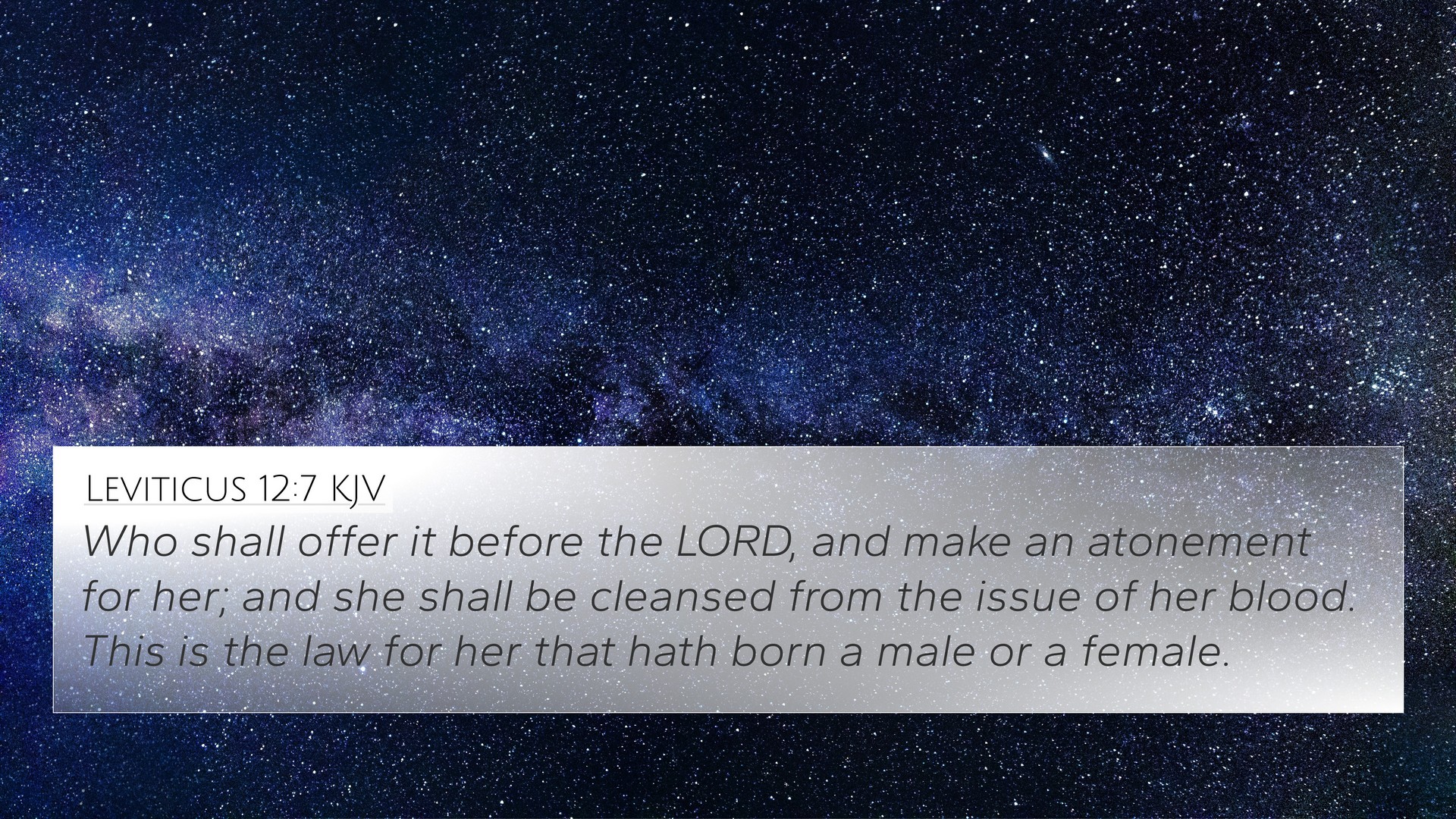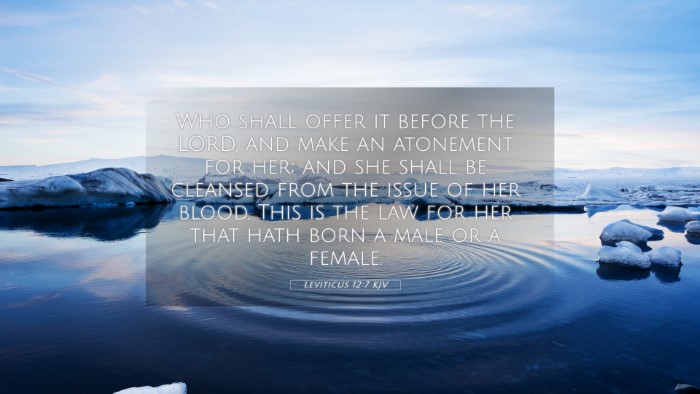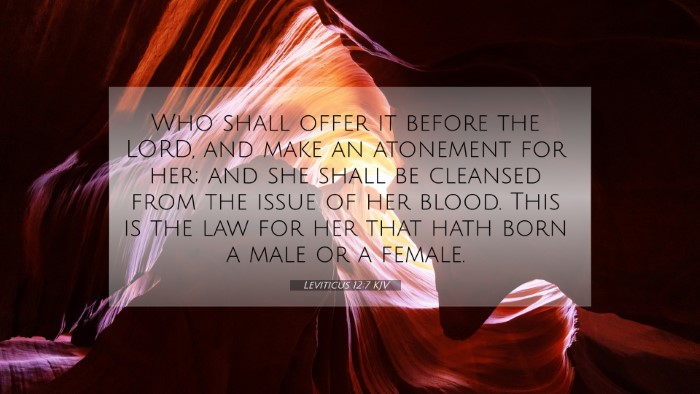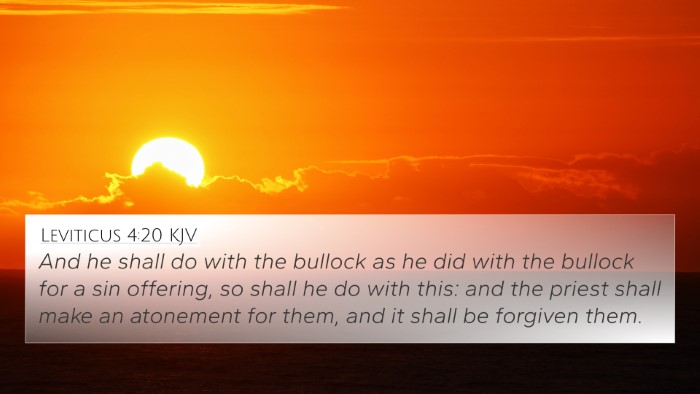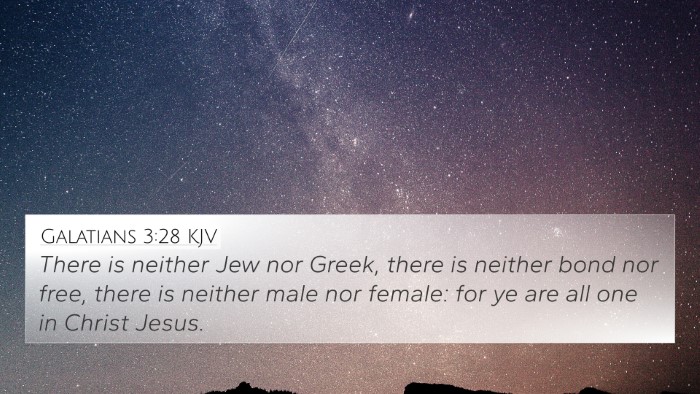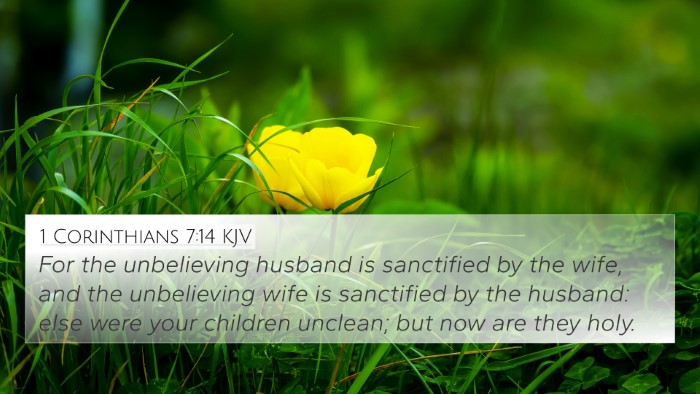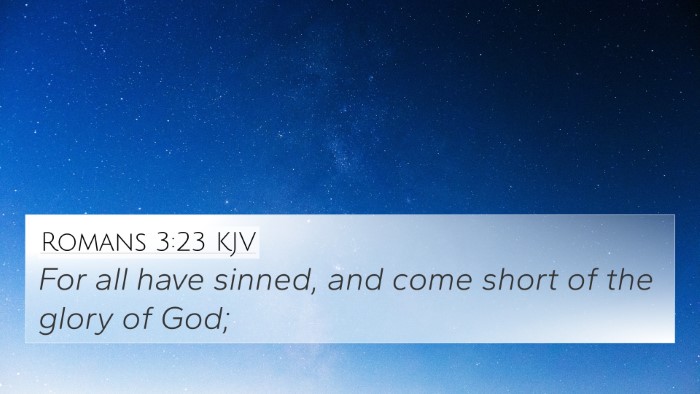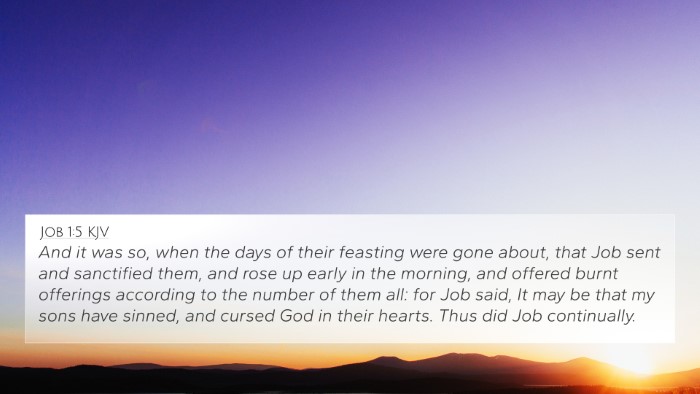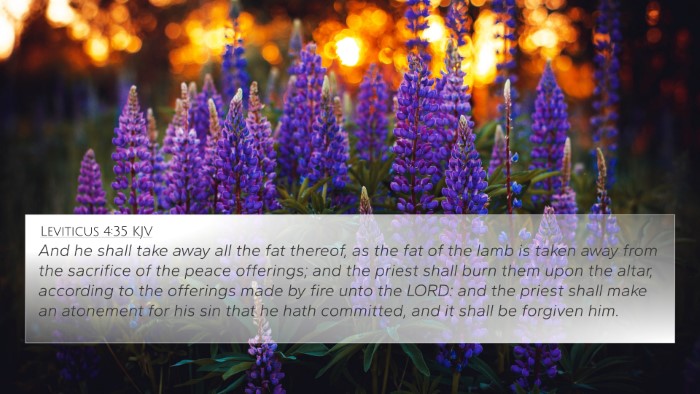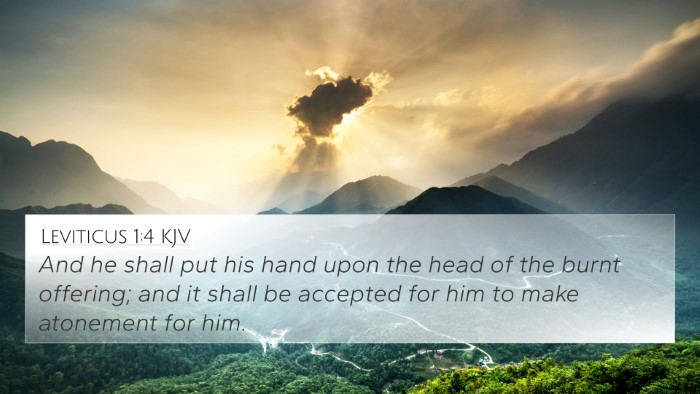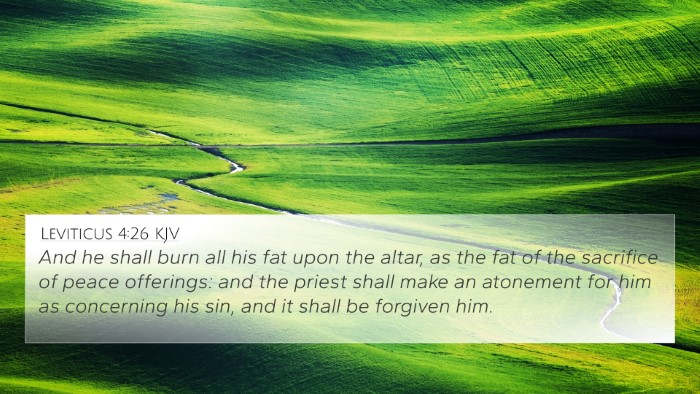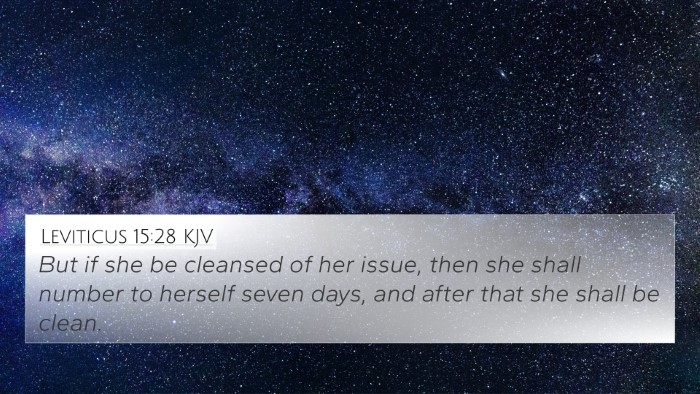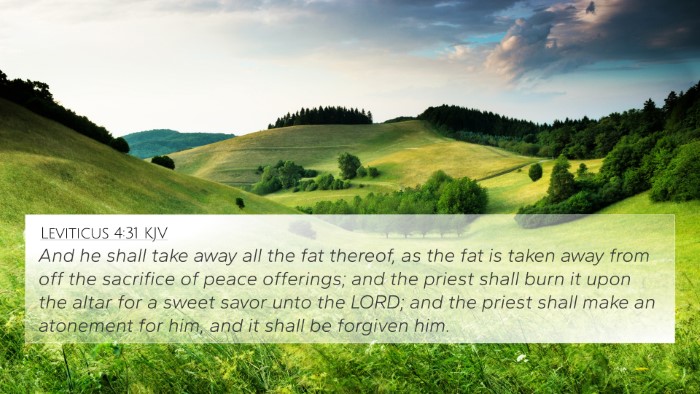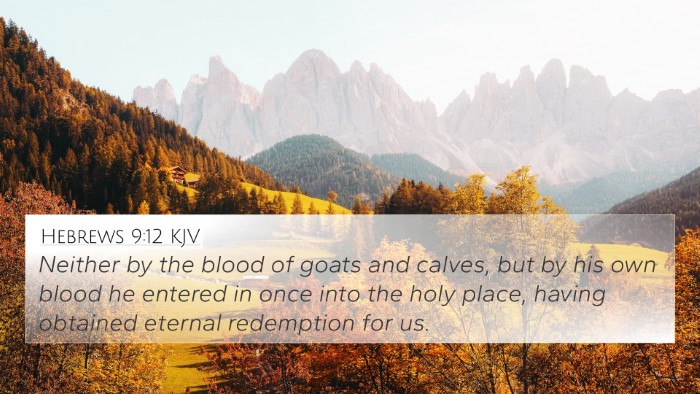Understanding Leviticus 12:7
Leviticus 12:7 states: "And shall offer it before the Lord, and make an atonement for her; and she shall be cleansed from the issue of her blood." This verse is found within the context of the laws concerning purification after childbirth. The significance of this rite lies in spiritual and communal restoration.
Interpretative Insights from Public Domain Commentaries
This passage emphasizes both the ceremonial law and the nature of atonement. Here are summarized insights gathered from Matthew Henry, Albert Barnes, and Adam Clarke:
-
Matthew Henry:
Henry highlights that this purification offering illustrates God’s recognition of childbirth as a significant event that requires both spiritual and physical cleansing. It serves as a reminder of the mother's devotion and submission to God's regulations.
-
Albert Barnes:
Barnes notes that the act of offering is an acknowledgment of God’s role in the gift of life. The atonement describes a necessary step to restore one’s standing before God after a life-altering experience like childbirth, emphasizing personal and communal holiness.
-
Adam Clarke:
Clarke elaborates that the purification ritual reflects God's desire for cleanliness and sanctity, linking personal purity to the ability to worship God within the community. The maternal experience, while joyous, also crosses into the territory of ritual impurity, necessitating this ceremonial act to reaffirm the mother’s role in the covenant community.
Bible Verse Cross-References
The following verses relate directly to Leviticus 12:7, providing connections to broader biblical themes such as purification, sanctity of life, and atonement:
- Leviticus 15:19-30 - Details laws concerning bodily discharges, emphasizing the need for cleanliness.
- Luke 2:22 - Reflects Mary's purification after the birth of Jesus, highlighting the continuity of these laws in the New Testament context.
- Hebrews 9:13-14 - Discusses how the blood of bulls and goats sanctifies but emphasizes the greater purification through Christ’s blood.
- 1 Peter 1:18-19 - Illustrates the theme of redemption and the preciousness of Christ's sacrifice as a cleansing agent.
- Isaiah 66:7-9 - Shares the concept of new life and divine birth pains associated with the restoration of Israel.
- Psalm 51:10-12 - Presents King David’s plea for spiritual renewal and cleansing, paralleling the need for atonement after sin.
- Romans 3:25 - Discusses God’s atonement through Christ, connecting Old Testament practices with New Testament grace.
Thematic Connections
This verse encapsulates themes of purification and atonement that resonate throughout Scripture:
- Purification: Reflects the need for spiritual cleanliness ($James 4:8$).
- Atonement: Highlights the significance of Jesus as our ultimate mediator ($1 Timothy 2:5$).
- Life and Death: Engages with concepts of birth and rebirth ($John 3:3$).
Conclusion
Leviticus 12:7 serves as a testament to God’s order and the necessity of maintaining purity in God's community. By using tools for Bible cross-referencing, one can explore broader themes and discover connections between Bible verses that elucidate the meaning behind ceremonial laws and their fulfillment in Christ. This helps to deepen one’s understanding through a comparative Bible verse analysis which draws links between disparate texts and reveals the overarching narrative of redemption.
